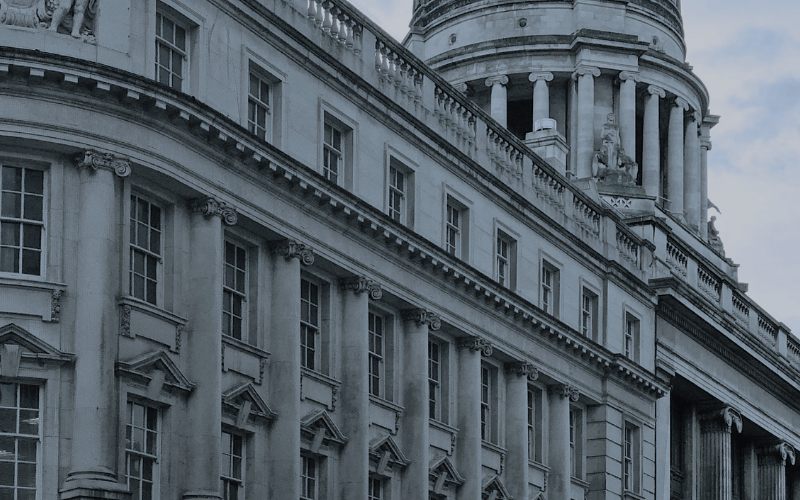The Toxic Debt Dilemma
“Small businesses set to default on billions of pounds worth of loans made to keep them afloat during the pandemic” - Financial Times, 2020
The Treasury Department, HMRC and Financial Lenders are all beginning to lose sleep over the sheer amount of potential toxic debt paid out in loans to small businesses over the past few months. The fear is that there is little to no chance of full repayment which is going to cause a large amount of uncertainty, a sharp uptick in default rates, and potential financial distress for lenders. Unlike the subprime market, the government is unlikely to have enforcers knock on the doors of these businesses or utilise intimidation strategies like those witnessed in the movies to get the loans back with interest accrued. The harsh reality is that many of these businesses simply may not survive.
The Treasury currently expects the default rate within these loans to be circa 20%, with some more extreme estimates coming in at around the 50% mark. When you think of the scale and amount of capital provided for this scheme; which is expected to hit around £56 billion by completion, this investment in returning our economy to a normalised state is a stratospheric figure would typically only seen in the valuation of a FTSE 100 company.
So Who's Paying The Bill?
However, with this paternalistic decision comes a price to pay, and that price is the UK Treasury department’s diminishing capital. The Covid-19 bailout and protection programmes are the largest government expenditure initiatives undertaken since the Second World War. The repercussions of this will most likely be seen through indirect taxes which are typically more difficult to spot. Although many colleagues and contacts of mine think the tax bracket may be increased, I think it’s unlikely that an income tax amendment would be taken forward. This is primarily because it would go down like a lead balloon within the higher echelons of London’s financial hub which is a core driver of the UK economy and crucial to the nation’s economic recovery from Covid-19.
Small Business Survival, But At What Cost?
For small business loans, there was always going to be a trade-off decision that the government would have to make. The ultimate goal is for as many small businesses to survive, whilst minimising the amount of risk to the lender through mass scale due diligence checks on the credit given out. Unfortunately, within the initial Covid timeframes, as everyday small businesses were losing vital survival capital, some of these trade-offs were prioritised. The key to avoiding toxic debt is the amount of due diligence checks required to receive a small business loan. These checks were minimised to streamline the process of receiving the loan and enable fast payment into small business accounts due to the extreme circumstances we found ourselves in. Coupling this with extremely low interest rates compared to consumer lending makes for a high-risk strategy in terms of successful repayments.
What this has done is create a vicious cycle of easy access to capital up to £50,000 with 0% interest for the first year, which is extremely attractive to small businesses. The kicker here is that a significant proportion of these businesses will not be able to pay back the loans, and the collections and restructuring departments within the lenders won’t be geared up to scale with the influx of capacity needed, leaving the lenders in a precarious risk position. The Government has moved away from a centralised bail-out option leaving the lenders with a plethora of questions and risks to face. Do they take on the operational risk and scale up with temporary resources to cover the influx? Or do they invest in technological solutions in an attempt to drive automation across the collections function? These are questions that will be bubbling around within the lender's board meetings to try and get to an answer and solution.
Technology To The Rescue
The option of utilising technology is the most obvious in terms providing a long-term benefit for the lenders. Exploiting technologies such as data science, machine learning and cognitive AI can help to categorise, sort, and curate the information available to the lenders in the data gathering process. This can help shape where the lenders should be exerting their efforts. Technologies will also be required to help battle the heightened levels of customer interactions. Using maturing automation strategies such as chatbots to help navigate a simple customer journey will help limit the amount of scaling up and let the experienced collections agents focus on the trickier or higher value customer situations.
Although technology can help mitigate some of the underlying operational issues what it can’t do is turn toxic debt into good debt, and if the volume of toxic debt does indeed boom then there will be considerable trouble in the financial markets and the government may be forced to intervene. With concerns of a second wave rising, lenders and regulators alike aren’t going to sleep easily just yet. Both the pandemic itself, and the economic issues it has caused, are far from over.
Published
April 29, 2024Reading time
3 minutesRelated posts





